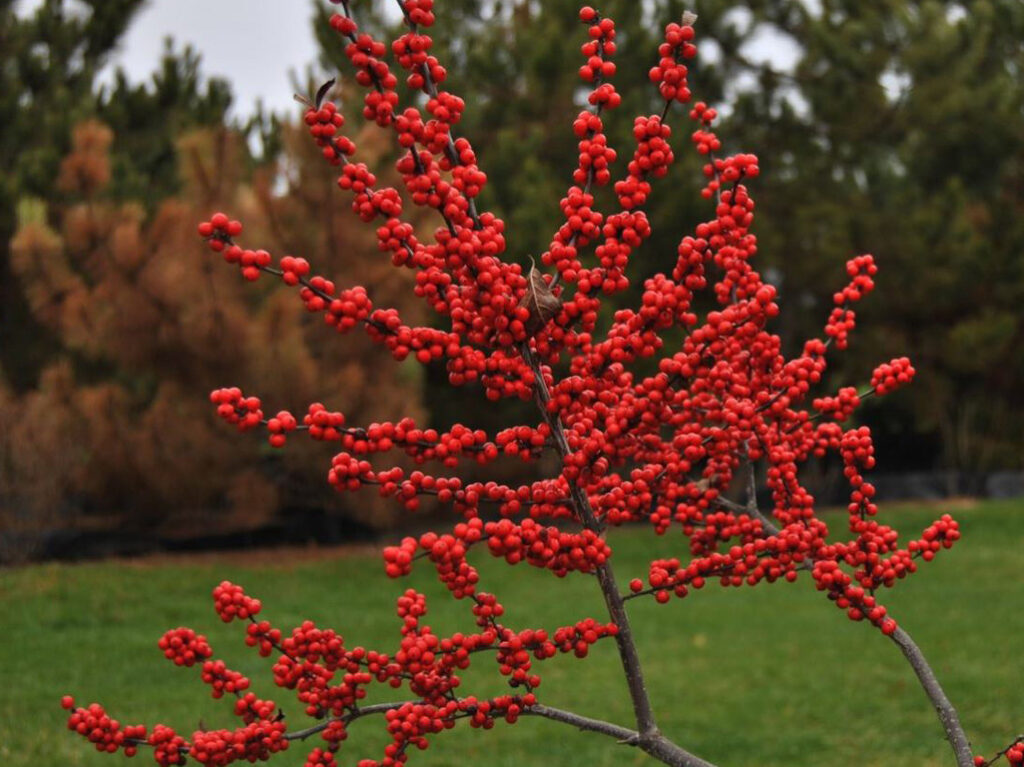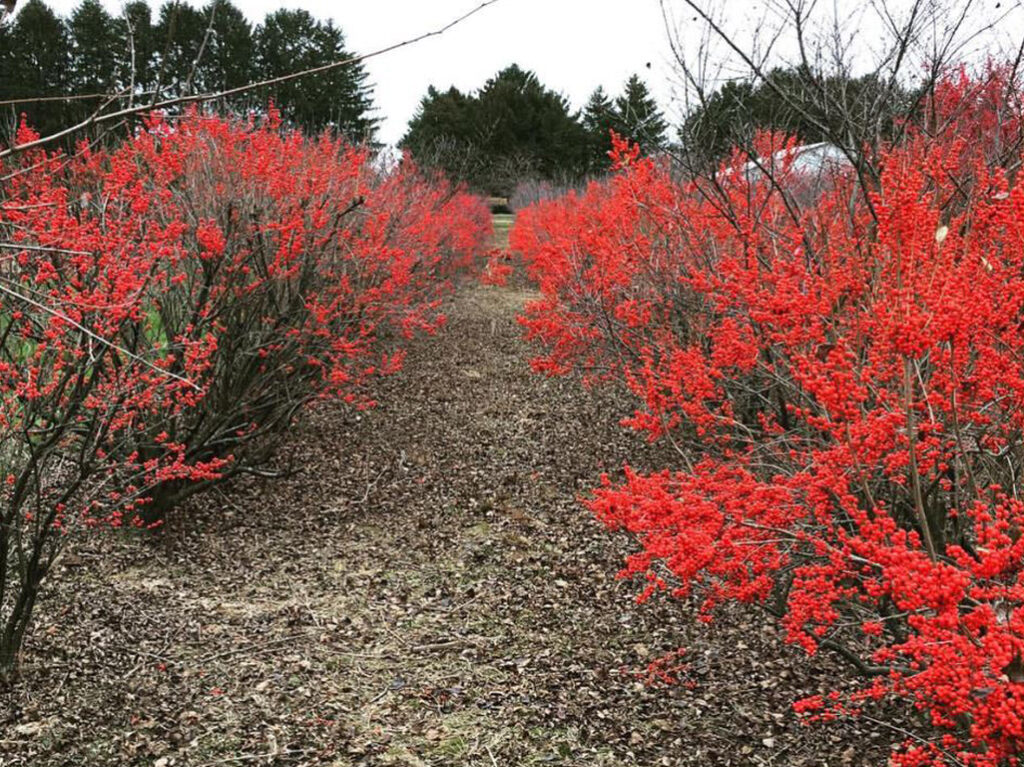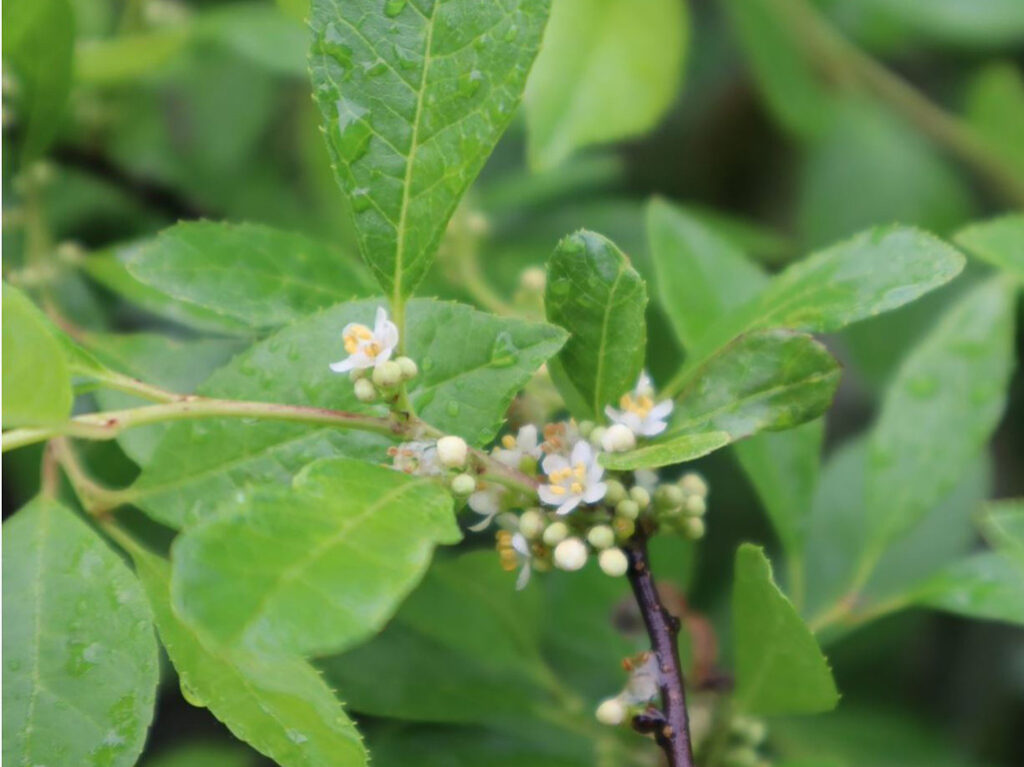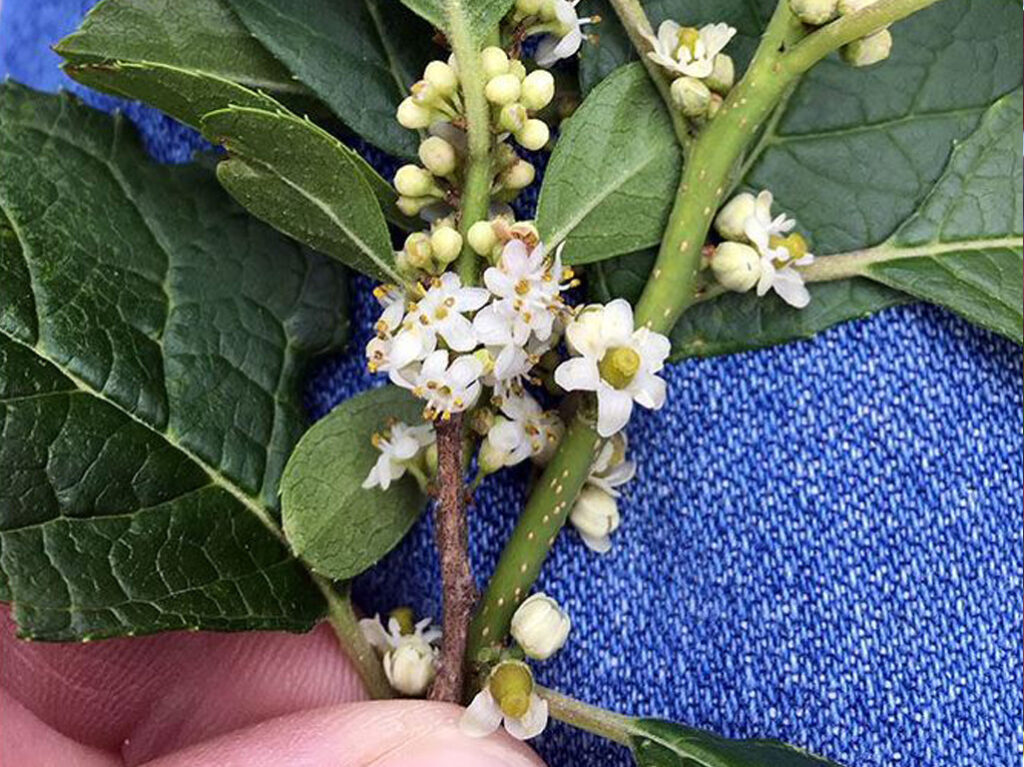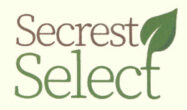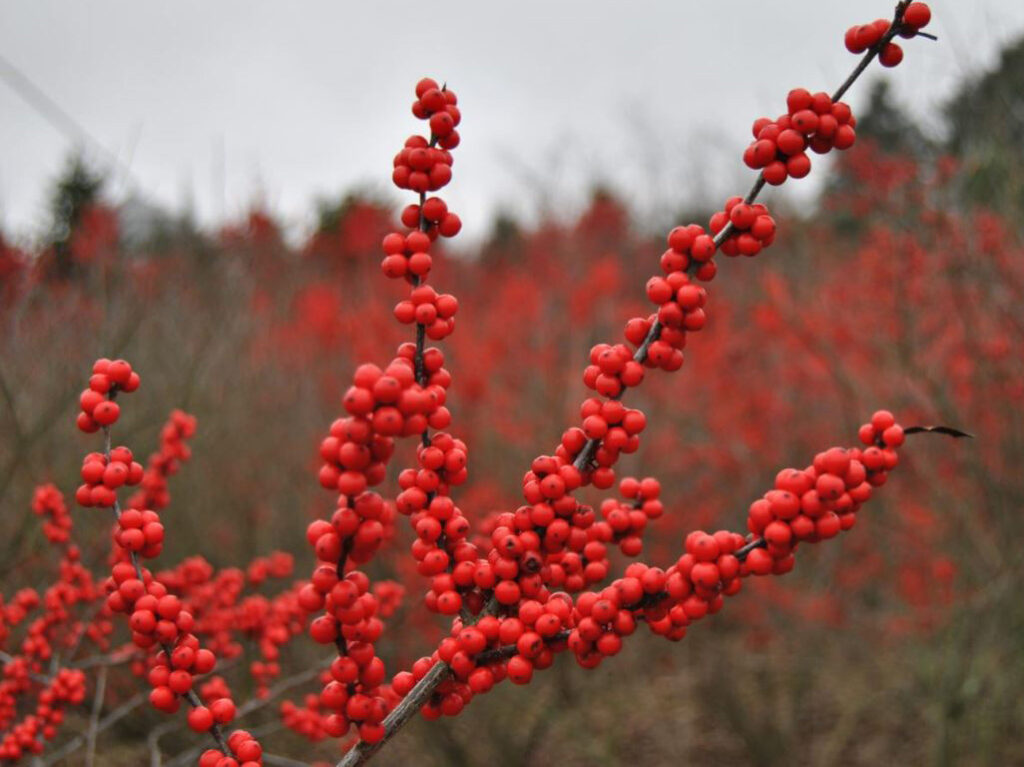
*Ilex verticillata ‘Winter Red’
Common Name
Winter Red Winterberry Holly
Family
Aquifoliaceae (Holly)
Tree or plant type / form
Deciduous Shrub
Landscape Use
An excellent choice for wet sites, naturalized areas, or in the shrub border. Very effective in mass plantings. Both male and female plants are needed for fruit.
Season of interest and/or other ornamental feature(s)
Early fall, mid fall, late fall, early winter, midwinter
Mature Landscape Size
Height: 6 to 8 feet, Spread: 6 to 8 feet; can be periodically pruned/rejuvenated to control size
Light exposure
Full sun to part shade; heavy shade results in fewer flowers and fruit
USDA Hardiness zones
3 – 9
Origin / Native locale
‘Winter Red’ is a cultivated variety (cultivar) selected from a species native to Eastern North America
Wildlife Value (incl. pollinators)
Birds
Soil Type & Drainage
Acid soil, Moist, well-drained soil, Wet soil
Tolerances
Alkaline soil, Occasional flooding, Road salt, Wet sites
Leaf Description
Lustrous dark green leaves (to 3-5” long) turning yellow in fall.
Bloom Time in Northeast Ohio
Late May to June
Flower Description
Insignificant white flowers
Cone / Fruit
The bright red persistent fruits of winterberry holly glow in the winter landscape. ‘Winter Red’ is a female clone which needs a male pollinizer* to produce the attractive red fruit, botanically multi-seeded drupes, which are the signature ornamental characteristic of the winterberries. ‘Winter Red’ has retained its reputation as one of the finest winterberry cultivars since being introduced by Simpson Nursery in Vincennes, Indiana over 40 years ago. Generally one male winterberry (such as I. verticillata ‘Southern Gentleman’) will be sufficient for *pollinizing 9-10 ‘Winter Red’ plants. Cut branches of winterberry are a popular holiday decoration.
*(pollinators are the vector, i.e. bees)
Available at
Secrest Arboretum Plant Discovery Days, selected local nurseries, and via mail order growers
Use the Secrest Aboretum Explorer to find locations where this plant is located on the Wooster campus.
